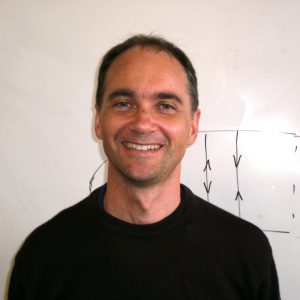By annamuscara
In
2023-11-232023-11-23https://rhed.amsi.org.au/wp-content/uploads/sites/73/2020/06/amsi_rhed_v2-2.pngResearch and Higher Educationhttps://rhed.amsi.org.au/wp-content/uploads/sites/73/2020/06/amsi_rhed_v2-2.png200px200px
Professor Andrew Hassell (ARC Laureate Fellow), The Mathematical Sciences Institute, The Australian National University

Andrew Hassell is currently a Professor and Laureate Fellow in the Mathematical Sciences Institute at ANU.
He is a leading Australian mathematical analyst, who specialises in the spectral theory of partial differential equations, and harmonic analysis of manifolds. Andrew has made significant contributions to mathematics in the areas of quantum ergodicity and quantum chaos, analysis on asymptotically conic spaces, time-dependent Schrodinger equations and Strichartz estimates, scattering theory, spectral invariants and numerical analysis. He has aroused considerable interest internationally by exhibiting examples of planar domains on which the billiard flow is quantum ergodic without being quantum unique ergodic.
His PhD was done at MIT in the period 1990-94. After that, he did a 2 year postdoc at Stanford University, and then he moved to ANU, initially as an ARC Postdoctoral Fellow. He became an ARC Research Fellow during 1999-2004, and a Future Fellow during 2010-2014. He was elected to the Australian Academy of Science in 2013.
| DATE | TIME | PRESENTER | VENUE | REGISTER |
|---|---|---|---|---|
| Monday, 15 January | 12pm - 1.30pm AEDT | Professor Andrew Hassell | China in the World, Building 188 Fellows Lane The Australian National University Also broadcast over Zoom | Watch lecture recording |
Scattering theory, in mathematics, is a way of studying complex interactions by focusing on the “before” and “after” states, without worrying too much about the “in-between”, which is usually much harder to understand. I’ll start with simple examples and (aspirationally) work up to some examples of recent research interest.